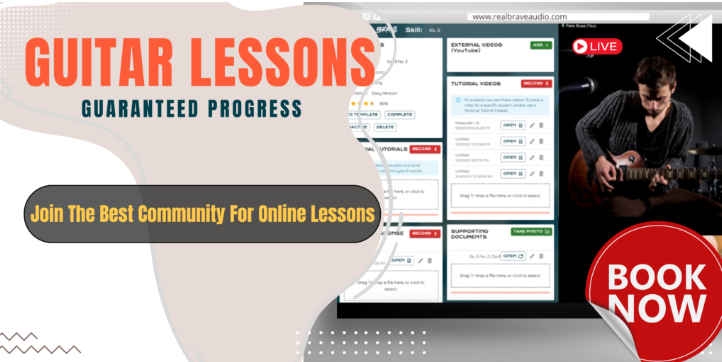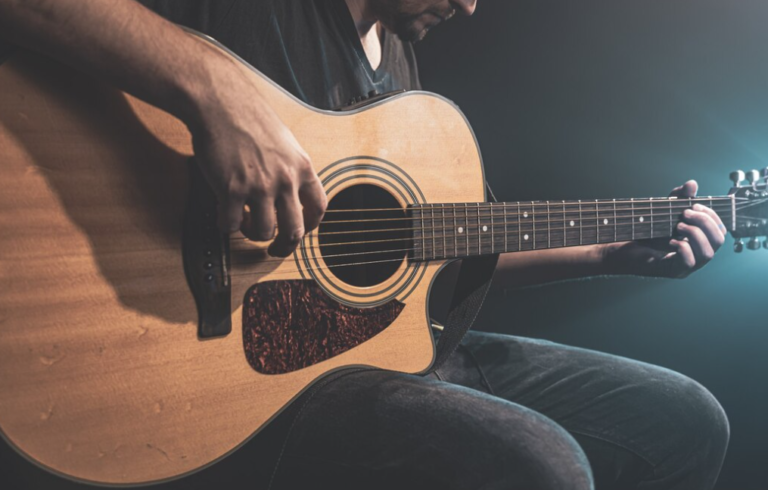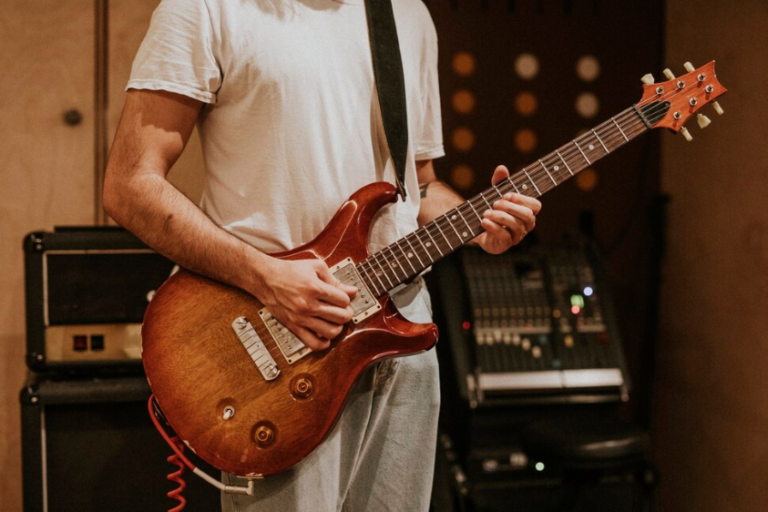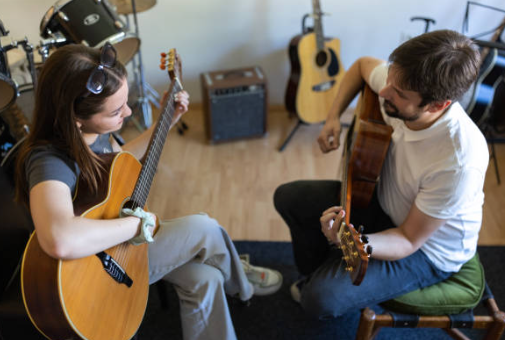What Are Chord Tones? The Secret Ingredients of Great Solos

If you’ve ever wondered why some solos sound so perfect, so locked-in with the music, the answer often comes down to one simple concept: chord tones. Whether you’re playing jazz, rock, blues, or even pop, mastering a chord tone is one of the true “secrets” to creating solos that connect deeply with the song.
Today, we’re going to explore what chord tones are, why they matter, and how you can target them while improvising to instantly elevate your playing.
What Are Chord Tones?
At its core, a chord tone is simply any note that belongs to the current chord being played. For example:
- In a C major chord (C – E – G), the chord tones are C, E, and G.
- In an A minor chord (A – C – E), the chord tones are A, C, and E.
- In a G7 chord (G – B – D – F), the chord tones are G, B, D, and F.
Every chord is made up of specific notes, and these are the chord tones you want to highlight when you’re improvising.
Why Are Chord Tones So Important?
When you improvise, simply running up and down a scale can sometimes make your solos sound random or disconnected. These are like magnets, they pull your lines into harmony with the band. When you hit a chord tone at the right moment (especially on strong beats), it feels intentional, melodic, and musically satisfying.
Using them allows you to:
- Create melodies that fit perfectly over the progression
- Build solos that sound more professional and connected
- Make your improvisation emotionally richer and more engaging
In short, they are the glue that holds your solos together.
How to Target Chord Tones While Improvising
1. Learn the Chord Tones of Each Chord
Before you can target them, you need to know them! Start by:
- Writing out the notes for each chord in the progression.
- Practicing finding these notes on your instrument.
For example, if you’re improvising over a basic I-IV-V progression in C major (C – F – G), identify them for each chord inside and out.
2. Practice Hitting Chord Tones on Strong Beats
The strongest points of connection are often when you land on a chord tone on a strong beat, like beats 1 and 3 in 4/4 time.
Exercise:
- Play a backing track with a simple chord progression.
- Improvise short phrases, making sure you land on a chord tone on the first beat of every new chord.
This instantly makes your solo sound more “in tune” with the song.
3. Use Passing Tones to Connect Chord Tones
You don’t have to only play chord tones — that would sound a bit robotic. Instead, target chord tones and connect them with passing tones (notes from the scale that lead you from one chord tone to another).
Think of it like this:
Chord tones are your “home bases,” and passing tones are the roads you take to travel between them.
4. Outline Chords in Your Solo
Another powerful trick is to outline the chord melodically. This means you might arpeggiate the notes of the chord during your solo (play them one after the other rather than all at once).
For example, over a D minor chord, you could emphasize D – F – A in your solo lines to really hammer home the harmony.
5. Visualize Chord Tones Across the Neck
If you’re a guitarist (or bassist, or another fretboard-based player), learn to visualize where chord tones lie across the fretboard — not just in one shape, but everywhere. This allows you to:
- Move freely during your solos
- Always know where the strong, stable notes are
- Craft more interesting and melodic phrases
Bonus Tip: Start Simple, Then Expand
When you’re first practicing targeting chord tones, keep it simple. Focus on hitting one or two chord tones per chord change. As you get more comfortable, you can start adding more complexity, like:
- Approaching chord tones chromatically (by a half-step)
- Using rhythmic variations
- Adding slides, bends, or vibrato for expression
Over time, you’ll develop the ability to naturally target chord tones without thinking — and that’s when your solos will truly start to sing.
Chord Tone Targeting Practice Routine
Goal:
Build the ability to recognize, find, and target chord tones smoothly during improvisation.
Step 1: Chord Tone Mapping (5–10 minutes)
Exercise:
- Pick a simple progression (example: C – F – G – C).
- Write out the chord tones for each chord:
- C Major: C, E, G
- F Major: F, A, C
- G Major: G, B, D
- On your instrument, slowly play through the chord tones for each chord. Focus on different areas of the fretboard (or keyboard if you’re not a guitarist).
Tip:
Say the names of the notes out loud as you play them.
Step 2: Chord Tone Landing (10 minutes)
Exercise:
- Play a backing track (or loop) of the chord progression.
- Improvise simple melodies, making sure you land on a chord tone on beat 1 of every new chord.
- You can use scale notes as passing tones, but the first note of every chord change should be a chord tone.
Tip:
Keep it simple — even quarter notes or half notes are great at this stage.
Step 3: Chord Tone Connection (10 minutes)
Exercise:
- Pick two chord tones from two consecutive chords.
- Create short melodic lines that connect the chord tones using passing tones.
Example:
- From C (C major chord) to A (F major chord):
- You might play: C – D – E – F – G – A (walking up the scale).
- Or: C – B (approach note) – A.
Goal:
Smoothly and musically move between chord tones when chords change.
Step 4: Arpeggio Outlining (5–10 minutes)
Exercise:
- Practice arpeggiating the chords during your solo.
- Over C major, play C – E – G (arpeggio).
- Over F major, play F – A – C.
- Over G major, play G – B – D.
Variation:
Improvise melodies by mixing a chord tone in different orders and rhythms (instead of just playing straight up or down the arpeggio).
Step 5: Creative Jam Session (10 minutes)
Exercise:
- Set a timer for 10 minutes.
- Play along with a backing track.
- Improvise freely, but focus on emphasizing chord tones at the start or end of your phrases.
- Let your ears guide you, but keep the chord tones as your “anchor points.”
Tip:
Record yourself! Listening back will help you hear when you successfully connect to the chords and when you drift off.
So, wrapping up…
Chord tones are truly the secret ingredient that separates average improvisers from great ones. By learning to recognize and target them while improvising, you build solos that sound musical, intentional, and powerful.
Remember:
✅ Know your chord tones
✅ Land on them with purpose
✅ Connect them with creativity
Keep practicing, stay patient, and soon you’ll notice a massive improvement in how your solos sound and feel!
Interested in taking your guitar skills to the next level? Click below and book a free lesson with us! We’re committed to helping you express yourself freely on the guitar without endless scales and theory.
Author: Daniel Powers Jr, the founder of Real Brave™, serves as the chief inspiration to thousands of students in the Real Brave music instruction program. He’s also the visionary behind PracticePad™, an online platform for live one-on-one online music lessons, lesson tracking, and scheduling. Beyond his entrepreneurial pursuits, Daniel leads a non-profit organization that provides formerly homeless children with access to music education, making a profound impact on their lives. His unwavering dedication to music, innovation, and education continues to inspire individuals to reach their fullest potential while creating positive change in communities. Follow Real Brave on all the socials:
youtube.com/@realbraveinc
twitter.com/realbraveinc
https://www.tiktok.com/@realbraveinc
instagram.com/realbraveaudio
facebook.com/realbraveinc






